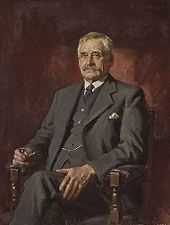European Australian
| |||||||||||||
| Languages | |||||||||||||
|---|---|---|---|---|---|---|---|---|---|---|---|---|---|
|
Mainly English | |||||||||||||
| Religion | |||||||||||||
|
Protestantism and Roman Catholicism; Agnosticism, deism, Orthodox Church, Buddhism,[2] Wiccan/pagan, Muslim | |||||||||||||
| Related ethnic groups | |||||||||||||
| |||||||||||||
|
| |||||||||||||
A European Australian is a citizen or resident of Australia, who has ancestral origins in any of the original peoples of Europe.
Since the beginning of British settlement in 1788, people of European descent have formed the majority of the population in Australia. The majority of European Australians are of British - English, Scottish, Welsh or Cornish and Irish (Anglo-Celtic) - ancestral origin. In 2010, it was estimated that around 74% of the Australian population were Anglo-Celtic Australians.[6] Other significant ancestries include Italian, German, Greek, Dutch, New Zealanders (European New Zealanders), Polish, Maltese and Croatian.[1] Today, Australians of Anglo and other European descent are the dominant majority in Australia, ranging between 85-92% of the total population.[7][8]
Historically, European immigrants had great influence over Australian history and society, which resulted in the perception of Australia as a European country.[9][10]
History
Early sightings by Europeans
The first records of European mariners sailing into 'Australian' waters occurs around 1606, and includes their observations of the land known as Terra Australis Incognita (unknown southern land). The first ship and crew to chart the Australian coast and meet with Aboriginal people was the Duyfken captained by Dutchman, Willem Janszoon.
Between 1606 and 1770, an estimated 54 European ships from a range of nations made contact. Many of these were merchant ships from the Dutch East Indies Company and included the ships of Abel Tasman. Tasman charted parts of the north, west and south coasts of Australia which was then known as New Holland.
In 1770, Englishman Lieutenant James Cook charted the Australian east coast in his ship HM Barque Endeavour. Cook claimed the east coast under instruction from King George III on 22 August 1770 at Possession Island, naming eastern Australia 'New South Wales'. The coast of Australia, featuring Tasmania as a separate island, was mapped in detail by the English mariners and navigators Bass and Flinders, and the French mariner, Baudin. A nearly completed map of the coastline was published by Flinders in 1814.
This period of European exploration is reflected in the names of landmarks such as the Torres Strait, Arnhem Land, Dampier Sound, Tasmania, the Furneaux Islands, Cape Frecinyet and La Perouse. French expeditions between 1790 and the 1830s, led by D'Entrecasteaux, Baudin, and Furneaux, were recorded by the naturalists Labillardière and Péron.
First Settlement by Europeans

The British Crown Colony of New South Wales started with the establishment of a settlement at Sydney Cove by Captain Arthur Phillip on 26 January 1788. This date later became Australia's national day, Australia Day. These land masses included the current islands of New Zealand, which was administered as part of New South Wales.[11] Van Diemen's Land, now known as Tasmania, was settled in 1803.
The first European Australians came from United Kingdom and Ireland.[12][13] The southeast of Australia was the first region to be settled by European Australians in 1788.[14]
Other British settlements followed, at various points around the continent, most of them unsuccessful. In 1824, a penal colony was established near the mouth of the Brisbane River (the basis of the later colony of Queensland). In 1826, a British military camp was established in Western Australia at King George Sound, to discourage French colonisation. (The camp formed the basis of the later town of Albany.) In 1829, the Swan River Colony and its capital of Perth were founded on the west coast proper and also assumed control of King George Sound. Initially a free colony, Western Australia later accepted British convicts, because of an acute labour shortage.
The British Colonial Office in 1835 issued the Proclamation of Governor Bourke, implementing the legal doctrine of terra nullius upon which British settlement was based, reinforcing the notion that the land belonged to no one prior to the British Crown taking possession of it and quashing earlier treaties with Aboriginal peoples, such as that signed by John Batman. Its publication meant that from then, all people found occupying land without the authority of the government would be considered illegal trespassers.[15]
Separate colonies were created from parts of New South Wales: South Australia in 1836, New Zealand in 1840, Victoria in 1851, and Queensland in 1859. The Northern Territory was founded in 1863 as part of South Australia. The transportation of convicts to Australia was phased out between 1840 and 1868.
Massive areas of land were cleared for agriculture and various other purposes, in addition to the obvious impacts this early clearing of land had on the ecology of particular regions, it severely affected indigenous Australians, by reducing the resources they relied on for food, shelter and other essentials. This progressively forced them into smaller areas and reduced their numbers as the majority died of newly introduced diseases and lack of resources. Indigenous resistance against the settlers was widespread, and prolonged fighting between 1788 and the 1930s led to the deaths of at least 20,000 Indigenous people and between 2,000 and 2,500 Europeans.[16]
The European population grew from 0.3 percent of the population of the continent at 1800 to 58.6 percent at 1850.[17]
In 1868, the population of European Australians was 1,539,552.[18]
Irish formed about 25 per cent of the European Australian population in the nineteenth century.[13] Germans formed the largest non-British community for most of the 19th century.[19]
After World War II
Following World War II, the Australian government instigated a massive program of European immigration. After narrowly preventing a Japanese invasion and suffering attacks on Australian soil for the first time, it was seen that the country must "populate or perish". Prior to WWII, Australia had viewed itself as largely of British and Irish ancestry but after WWII the success of the United States and the reason for its success, that is largely the creation of a European diaspora, could not be ignored by Australia. Immigration brought traditional migrants from the United Kingdom along with, for the first time, large numbers of southern and central Europeans. A booming Australian economy stood in sharp contrast to war-ravaged Europe, and newly arrived migrants found employment in government-assisted programs such as the Snowy Mountains Scheme. Two million immigrants arrived between 1948 and 1975, many from Robert Menzies' newly founded Liberal Party of Australia dominated much of the immediate post war era, defeating the Australian Labor Party government of Ben Chifley in 1949. Menzies oversaw the post-war expansion and became the country's longest-serving leader. Manufacturing industry, previously playing a minor part in an economy dominated by primary production, greatly expanded. Since the 1970s and the abolition of the White Australia policy from Asia and other parts of the world, Australia's demography, culture and image of itself has been radically transformed.
In 1987, the vast majority of European Australians were descendants either of Anglo-Irish-Scots who arrived after 1850, or of Greeks, Italians, Hungarians, Balts, Poles and Germans who emigrated after 1945.[20]
Demographics
In the 2011 Census, Australians reported around 300 different ancestries. The most commonly reported ancestries were British (45 per cent) and Australian (33 per cent). A further 6 of the leading 10 ancestries reflected the European heritage in Australia – Irish (9.7 per cent), Italian (4.3 per cent), German (4.2 per cent), Greek (1.8 per cent) and Dutch (1.6 per cent).[21]
Since Australia's census doesn't ask for racial background, it is unclear how many Australians are descendants of Europeans. Estimates vary from 85% - 92%.[8][22]
In 2000, it was estimated that about 25% of European Australians were descendants of Irish.[23]
Culture

The legacy of British rule includes: the common law, the predominance of the English language, the Westminster system of government, Christianity (Anglicanism) as the once dominant religion, and the popularity of sports such as cricket and rugby; all of which are part of the heritage that has shaped modern Australia.[24]
Language
English is the de facto national language of Australia and is spoken by the vast majority of the population.
The most commonly spoken European languages other than English in Australia are Italian, Greek, Serbian/Bosnian/Croatian, Spanish, German, Macedonian, Polish, and French.
| Language | Speakers |
|---|---|
| Only English | 16,781,333 |
| Italian | 316,895 |
| Greek | 252,226 |
| Spanish | 98,001 |
| German | 75,634 |
| Macedonian | 67,835 |
| Croatian | 63,612 |
| Polish | 53,389 |
| Serbian | 52,534 |
| French | 43,216 |
| Maltese | 36,514 |
| Russian | 36,502 |
| Dutch | 36,183 |
| Portuguese | 25,779 |
| Hungarian | 21,565 |
| Bosnian | 16,806 |
| Afrikaans | 15,743 |
Prime Ministers of European ancestry
All of the ancestors of the thirty-three Prime Ministers of Australia were European and Anglo-Celtic (English, Scottish, Northern Irish, Welsh, or Irish). Some ancestors of three Prime Minister's did not emigrate from Britain or Ireland: some of the ancestors of Chris Watson were Germans (his father was German Chilean), some of the ancestors of Malcolm Fraser were European Jews, and some of Tony Abbott's ancestors were Dutch migrants (one of his grandparents).
See also
- Demographics of Australia
- Europeans in Oceania
- Asian Australian
- African Australian
- Aboriginal Australian
- European New Zealanders
References
- ↑ 1.0 1.1 "What’s your ancestry? New topic on profile.id".
- ↑ http://www.theage.com.au/victoria/census-reveals-citys-changes-20120624-20wme.html
- ↑ Illey, Chrissy (3 October 2011). "Hugh Jackman: The Wonderful Wizard of Oz". The Daily Telegraph (London). Retrieved 9 November 2013. "His parents were English and had come to Australia in 1967 as part of the "Ten Pound Poms" immigration"
- ↑ "1911census.co.uk blog » Blog Archive » Family history for actor Hugh Jackman". blog.1911census.co.uk. Retrieved 2014-02-20. "One of Jackman's paternal great-grandfathers was Greek"
- ↑ Peter Van Onselen, Wayne Errington, John Winston Howard: The Definitive Biography, p. 2-4 "Howard's ancestors were English, Scottish and Irish"
- ↑ A. Babacan, S. Singh, Migration, Belonging and the Nation State, Cambridge Scholars Pub., 2010, p. 16
- ↑ Brewer, Marilynn B., Karen Gonsalkorale, and Andrea van Dommelen. "Social identity complexity: Comparing majority and minority ethnic group members in a multicultural society." Group Processes & Intergroup Relations 16.5 (2013): 529-544.
- ↑ 8.0 8.1 McEvoy, Brian P., et al. "Geographical structure and differential natural selection among North European populations." Genome research 19.5 (2009): 804-814. "Approximately 85% of current Australians are descendants of European settlers who began arriving in 1788."
- ↑ Don Grant, Graham Seal, Australia in the World: Perceptions and Possibilities, 1994, p. 365
- ↑ Beijing Review - Oz's Reorientation, 8 June 2013
- ↑ For example the UK New South Wales Judicature Act of 1823 made specific provision for administration of land in New Zealand, by the New South Wales Courts, stating: "And be it further enacted that the said supreme courts in New South Wales and Van Diemen’s Land respectively shall and may inquire of hear and determine all treasons, piracies, felonies, robberies, murders, sexual conspiracies and other offences of what nature or kind soever committed or that shall be committed upon the sea or in any haven river creek or place where the admiral or admirals have power authority or jurisdiction or committed or that shall be committed in the islands of New Zealand".
- ↑ Leo Suryadinata (2000). Nationalism and Globalization: East and West. "The early European Australians were not only Protestant English and Welsh convicts, but also Scots and Catholic Irish".
- ↑ 13.0 13.1 Fritz, Clemens. "From Plato to Aristotle—Investigating Early Australian English." Australian Journal of Linguistics 24.1 (2004): 57-97.
- ↑ Native title research in Australian anthropology. Asche, Wendy and Trigger, David (2011) Native title research in Australian anthropology
- ↑ Governor Bourke’s Proclamation of Terra Nullius c.1835, NSW Migration Heritage Centre website
- ↑ Grey, Jeffrey (2008). A Military History of Australia (Third ed.). Port Melbourne: Cambridge University Press. pp. 28–40. ISBN 978-0-521-69791-0.
- ↑ P. Harris, The History of Human Populations, Volume II. Migration, Urbanization and Structural Change, 2003, p. 444
- ↑ Mallett, Ashley Alexander. The Black Lords of Summer: The Story of the 1868 Aboriginal Tour of England and Beyond. Univ. of Queensland Press, 2002, p. 110
- ↑ G. Leitner, Australia's Many Voices: Australian English—The National Language, 2004, p. 79
- ↑ Miriam Dixson, The Imaginary Australian: Anglo-Celts and Identity, 1788 to the Present, 1999, p. 113
- ↑ 2011 Census data shows more than 300 ancestries reported in Australia - Australian Bureau of Statistics
- ↑ R. Moran, P. Harris, S. Moran, Managing Cultural Differences, Routledge, 2007, p. 405
- ↑ PL Kilbride, NJ Farley, Irish diaspora, Encyclopedia of Diasporas, 2005, Springer
- ↑ How Anglicanism Shaped the Nation (PDF). Quadrant. 2009. Retrieved 20 November 2013.
| ||||||||||||||||||||||||||||||||||||||||||
| ||||||||||||||||||
| ||||||||||||||||||||||||||||||








